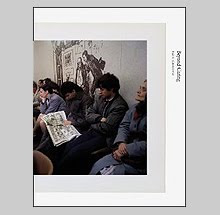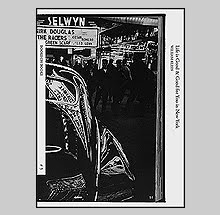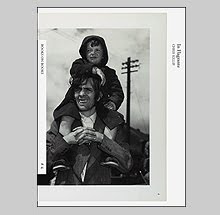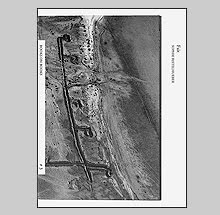Malick Sidibe: Fondation Zinsou catalog
I have written before about Malick Sidibe and his now famous studio in Mali and his documentation of the youthful nightlife of Bamako. Sidibe has recently been a subject of a major exhibition in Cotonou, Bénin at the Fondation Zinsou and they have published a great book of his work that I highly recommend.
Titled simply Malick Sidibe, it is a 190+ page hardcover catalog that covers most all of his known subjects such as the portraits along the Niger River, Feast days and ceremonies, portraits on motorbikes, boxers, the various studio portraits, musicians, DJ nightclubs, fashion and an interesting series of people photographed from behind called Morning Back View.
This catalog has very interesting production values unlike most. The rich black cover boards feature silver debossed foil stamping and a reproduction tipped in. The inner pages are coated with a very high glossy varnish over the entire page except for a quarter inch margin at the very page edges. The reproductions are in duotone and look good under the heavy varnish. At two points in the book, small booklets of photographs on thin matte paper are sewn between signatures. These are little books within the larger book that are a pleasant surprising break from the flow of the rest of the sections. Also the designer has images in the studio portraits sections flow off the page and continuing on the verso like a filmstrip.
What I am drawn to since I mostly know Sidibe's work is the design of this book. It is unexpected and I do not think undeserved or over-designed. Its handsome presentation invites me to sit longer with work that in other books I passed by in haste.
There are three downsides I can find. One is that the varnish is so glossy that it sticks the pages together and they need to be pulled apart as if stuck by electrostatic. The noise of the whole ordeal is a bit disconcerting and even after they are separated, they tend to become stuck again after the book is closed for a while. The second is that with the smaller booklets sewn in between signatures I have seen several copies where the bind separates at those spots causing the signatures to loosen. It is a book you'll want to be careful with handling. The third is that the essays needed better proof-reading as there are typos in the English translations that are surprisingly easy to spot.
If you do not have a book on Sidibe then search out a copy of this one. Even with the few flaws, it is one of my favorites discoveries that I brought back from Paris.
www.fondation-zinsou.org


























